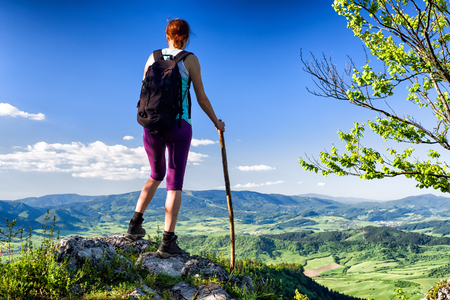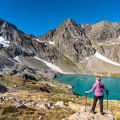Understanding the UK’s National Parks
Solo hiking across the United Kingdom’s national parks offers an experience quite unlike any other, thanks to the country’s diverse landscapes and long-standing traditions of land access. The UK is home to 15 designated national parks, each with its distinct character. For instance, the Lake District in Cumbria is renowned for its dramatic fells and shimmering lakes, while Scotland’s Cairngorms boast rugged mountains and ancient Caledonian forests. The South Downs and New Forest in southern England offer rolling chalk hills and ancient woodland, respectively, whereas Snowdonia in Wales presents a mixture of high peaks and lush valleys.
It’s important to recognise that the climate can vary significantly between these parks. The west coast parks such as the Lake District and Snowdonia are often wetter and windier, while those in the east, like the North York Moors, tend to be drier but more exposed. These variations mean hikers must always check local weather forecasts and prepare accordingly before setting out solo.
Regulations also differ from park to park. Wild camping is generally not permitted in England and Wales without landowner consent, whereas it is widely tolerated in most parts of Scotland under the Scottish Outdoor Access Code. Footpaths are well-marked in many parks, yet some areas—especially upland or remote regions—require good navigation skills. Respecting local guidelines on wildlife protection, livestock management, and countryside code is essential for both personal safety and environmental conservation when hiking alone.
2. Preparation: Mapping and Weather Awareness
Proper preparation is the bedrock of a safe solo hiking experience in the UK’s national parks. One of the first steps is ensuring you have reliable maps. While digital mapping apps are increasingly popular, always carry an Ordnance Survey (OS) map and a compass as backups; mobile signal can be unreliable in remote areas. Understanding how to read these maps is equally vital, so consider brushing up on basic navigation skills before setting out.
The unpredictability of British weather adds another layer of complexity to solo hiking. The UK is renowned for its rapidly changing conditions—clear skies can give way to dense fog or sudden downpours in a matter of minutes. Recognising local weather patterns and checking detailed forecasts from trusted sources like the Met Office before your walk is essential.
| Essential Preparation | Why It Matters |
|---|---|
| Carry OS Maps & Compass | Provides navigation support if devices fail or lose signal |
| Check Met Office Forecasts | Helps anticipate rapid weather changes unique to the UK |
| Understand Map Symbols & Terrain | Aids in route planning and identifying hazards (e.g., bogs, steep gradients) |
| Pack for Wet & Cold Conditions | Sudden showers and temperature drops are common even in summer months |
Weather conditions can alter the safety and accessibility of trails dramatically. Mist and fog may obscure paths, while heavy rainfall can turn tracks muddy or even impassable. Always leave details of your intended route with someone you trust and establish a check-in routine. Being prepared for the worst-case scenario makes all the difference when venturing alone into Britain’s stunning yet unpredictable wild places.

3. Navigation: Footpaths, Rights of Way, and Local Etiquette
When solo hiking in the UK’s national parks, understanding the navigation system is crucial for both safety and enjoyment. The British countryside is crisscrossed by an extensive network of public footpaths and rights of way, offering access to some of the most scenic landscapes. However, these routes come with their own unique conventions and signage that may be unfamiliar, especially to international visitors.
Following Public Footpaths
Public footpaths are legally protected routes that allow walkers to traverse private land. These paths are typically marked by yellow or green waymarkers, often bearing a walking figure or arrow. It’s important to stay strictly on designated paths, as straying off can damage crops or disturb wildlife habitats. Ordnance Survey maps are highly recommended for accurate navigation—they detail all official rights of way and help prevent accidental trespassing.
Respecting the Countryside Code
The UK’s Countryside Code sets out clear guidance for responsible behaviour in rural areas. Solo hikers should always close gates behind them, avoid disturbing livestock, and keep noise to a minimum. Litter must be packed out—‘leave no trace’ is more than a suggestion; it’s expected etiquette. If you encounter farm animals, give them a wide berth and never feed them. Remember, dogs must be kept on leads near livestock at all times.
Decoding British Signage
The British signage system can be subtle compared to other countries. Look out for colour-coded arrows: yellow for footpaths (walkers only), blue for bridleways (walkers, cyclists, horse riders), and plum-coloured for restricted byways (no motor vehicles). Stiles and kissing gates mark entry points into fields or different land parcels—these are not just historical quirks but practical boundaries. Pay attention to local notices regarding path closures or diversions, especially during lambing season or due to conservation work.
Local Considerations
Be aware that some areas have permissive paths—routes open by landowner goodwill rather than legal right—so check signs before entering. In certain national parks like the Lake District or Peak District, weather conditions can quickly obscure signage; carrying a map and compass is essential even if you rely on GPS. Finally, always greet fellow walkers with a friendly “hello” or “morning”—it’s part of the social fabric of British hiking culture.
4. Wildlife and Livestock: Coexisting Safely
When solo hiking in the UK’s national parks, encounters with wildlife and livestock are common and, for many, an integral part of the outdoor experience. From red deer in the Scottish Highlands to sheep grazing on the Lake District fells, understanding how to behave around these animals is vital for your safety and theirs.
Overview of Common Wildlife and Farm Animals
The UK’s national parks are home to a variety of mammals, birds, and farm animals. While most are harmless when treated with respect, some require specific consideration:
| Animal Type | Common Locations | Potential Risks |
|---|---|---|
| Red Deer | Scotland, Exmoor | Stags can be territorial, especially during rutting season (autumn) |
| Adders (UK’s only venomous snake) | Heathlands, moorlands | Bites are rare but can occur if accidentally trodden on; seek medical attention if bitten |
| Cattle (Cows & Bulls) | Pastureland across all parks | Protective of calves; may become aggressive if approached or startled |
| Sheep & Ponies | Dartmoor, Lake District, New Forest | Generally docile but avoid close contact, especially with lambs or foals present |
| Birds of Prey (Buzzards, Owls) | Upland areas, woodlands | Nesting birds may swoop if disturbed near their nests during breeding season (spring/summer) |
Best Practices for Solo Encounters
- Keep your distance: Always observe wildlife from afar. Avoid getting between adult animals and their young.
- Stay calm and move slowly: If you find yourself close to large mammals or livestock, do not run. Back away quietly.
- Avoid feeding animals: Feeding wildlife or farm animals can disrupt their natural behaviour and make them reliant on humans.
- If walking through fields with cattle: Stick to public rights of way, keep dogs on leads, and be prepared to let go of your dog if threatened by cattle.
- Check for adders: In warm months, adders may bask on paths. Watch where you step and wear sturdy boots.
- No sudden movements: Sudden gestures can startle both wild and farm animals. Speak softly if needed to alert animals to your presence.
- Nesting birds: Heed signs about ground-nesting birds in spring and early summer; detour if possible to avoid disturbing them.
Respecting Local Farming Practices
The UK countryside is a working landscape. Always close gates behind you, follow waymarked paths, and respect any temporary diversions due to lambing or calving. Farmers appreciate considerate hikers who help maintain good relations between landowners and visitors.
5. Connectivity and Emergency Planning
When solo hiking in the UK’s national parks, maintaining reliable connectivity and preparing for emergencies are critical safety considerations. Mobile signal coverage is highly variable across different regions and even within the same park. Before setting out, it’s sensible to assess the mobile network maps provided by service providers, but be aware that real-world conditions—such as valleys or dense woodland—can disrupt signal even in areas marked as “covered.” In remote zones like parts of Snowdonia or the Lake District, you may find yourself without service for extended stretches.
To bolster your safety net, consider registering your mobile number with local Mountain Rescue services where such schemes exist. This can expedite assistance in an emergency, as teams may have access to location-finding tools or be able to communicate via SMS if voice calls fail. It’s also worth saving emergency contact numbers directly to your phone and, if using a smartphone, enabling location sharing features where possible.
Another vital step is sharing your walking plans with trusted contacts before heading out. Provide details such as your intended route, expected times of arrival at key points, and contingency plans if you’re delayed. Agree on a check-in schedule or set up a “call home” system so someone knows when to expect confirmation of your safe return. In the UK, this practice is especially valued by hillwalking communities and can make a significant difference in response times should something go awry.
6. Gear and Kit: Essentials for Solo Hikers
Solo hiking in the UK’s national parks requires thoughtful preparation, especially when it comes to gear and kit. The British weather is infamous for its unpredictability—rain, wind, and sudden temperature changes can catch even seasoned hikers off guard. For solo adventurers, packing the right equipment is not just a matter of comfort, but of safety. Start with a high-quality waterproof jacket and trousers; even if the forecast looks fair, conditions can shift quickly, particularly in upland areas like the Lake District or Snowdonia. Don’t underestimate the boggy terrain found on moors and fells—waterproof boots with solid ankle support are essential, as is a change of socks kept dry in a sealed bag.
OS Maps and Navigation Tools
While digital mapping apps are popular, never rely solely on your phone for navigation. Always carry up-to-date Ordnance Survey (OS) maps specific to your route, plus a reliable compass—and know how to use them. Mobile signal can be patchy or non-existent in remote areas such as Dartmoor or the Scottish Highlands, making traditional navigation skills vital for staying safe and on course.
Layered Clothing for British Climates
Dress with layering in mind: a moisture-wicking base layer, insulating mid-layer (such as fleece or wool), and an outer waterproof shell provide versatility against changing weather. Lightweight gloves, a hat, and a buff or neck gaiter offer extra warmth when needed without taking up much space. Avoid cotton clothing as it loses insulation when wet and takes longer to dry.
Additional Essentials
A first aid kit tailored for solo travel should include blister plasters, painkillers, antiseptic wipes, and any personal medication. Add a head torch with spare batteries—even short routes can overrun into dusk during unpredictable UK daylight hours. A whistle, emergency bivvy bag or shelter, and high-energy snacks (like flapjacks or oat bars) are practical additions that boost both safety and morale if you encounter delays.
Finally, always pack enough water and consider a lightweight filter or purification tablets for longer routes where streams may be your only resupply option. With the right kit list—focused on waterproofs, OS maps, suitable clothing for wet ground, and essential safety tools—solo hiking in the UK’s national parks becomes an adventure that is both rewarding and responsibly managed.
7. Cultural Considerations and Respect for Local Communities
Solo hiking in the UK’s national parks is not only about appreciating natural landscapes but also about engaging thoughtfully with the local culture and communities that shape these areas. Understanding and respecting unspoken customs can make your journey smoother and foster positive connections along the way.
Understanding Local Customs
Many rural communities in the UK uphold traditions that may not be immediately obvious to visitors. For instance, it is customary to greet fellow walkers with a polite “hello” or nod, especially on less-travelled paths. Sticking to established footpaths is not just about conservation—it’s also a sign of respect for farmers’ land and livelihoods. Always close gates behind you, even if they were open when you found them; this simple act helps manage livestock and demonstrates awareness of countryside etiquette.
Engaging with Rural Communities
While solo hiking often means enjoying solitude, consider stopping in at village shops, pubs, or tearooms. These small businesses are lifelines for rural communities and often provide valuable local knowledge about current trail conditions or weather changes. Be mindful of personal space and privacy; many villagers value their quiet routines but will usually welcome friendly, respectful interaction.
Supporting Preservation Efforts
The UK’s national parks are protected through a blend of community stewardship and visitor responsibility. Respect signage, particularly those highlighting sensitive habitats or conservation projects—these are sometimes managed by volunteers from the local area. If you’re keen to give back, look out for organised litter picks or donation boxes supporting park maintenance. Purchasing locally made goods also contributes directly to the economic health of these regions.
Leaving a Positive Impact
Your actions as a solo hiker contribute to the ongoing relationship between visitors and host communities. Practise ‘leave no trace’ principles rigorously, take time to learn about regional history, and share your appreciation with locals when appropriate. By approaching solo hiking with cultural sensitivity and an open mind, you help ensure these special landscapes remain welcoming places for everyone.


